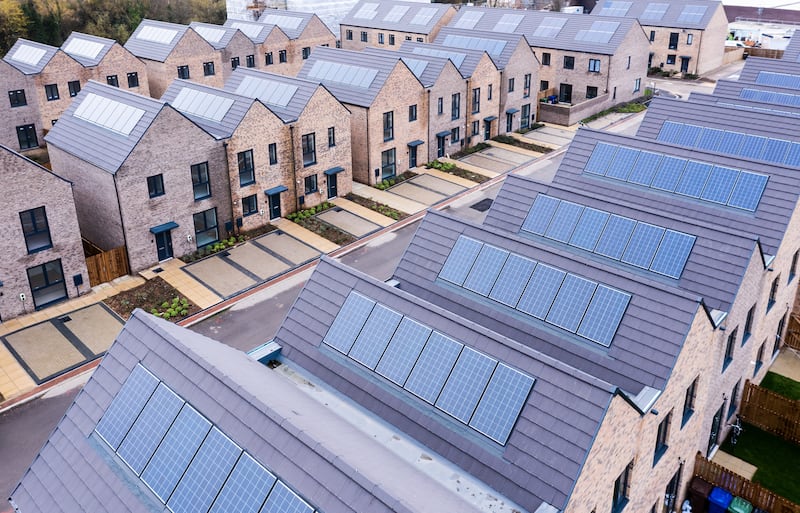Surging power demand means the world is entering “a new age of electricity” bringing evolving challenges for governments in ensuring supply that is secure, affordable and sustainable, the International Energy Agency (IEA) has said.
Electric consumption is forecast to rise at its fastest pace in recent years, growing at close to 4 per cent annually to 2027 as power use climbs in many sectors, the IEA’s main market analysis, Electricity 2025, said.
Growth in global demand will be the equivalent of adding an amount greater than Japan’s annual electricity consumption every year between now and 2027, it says.
This is primarily driven by “robust growing use of electricity for industrial production, increased demand for air conditioning, accelerating electrification, led by the transport sector, and rapid expansion of data centres”.
‘There wasn’t a dry eye in the house’: Smallest baby ever cared for at Rotunda goes home
Four killed after cable car crash on mountain near Naples
Rosie O’Donnell on her new life in Dublin: ‘I see reflections of myself in this country everywhere I look’
Ireland’s rugby exiles in Britain: Meet the Jack Charlton-style granny hunters
Most additional demand (85 per cent) will come from emerging and developing economies. The trend is most pronounced in China where electricity requirement has been growing faster than the overall economy since 2020.
China’s electricity consumption rose by 7 per cent in 2024 and is expected to grow by an average of around 6 per cent to 2027.
This has been fuelled in part by industry where, alongside the traditional power-hungry sectors, the rapidly expanding electricity-intensive manufacturing of solar panels, batteries, electric vehicles and associated materials played a significant role. Air conditioning, EV adoption, data centres and 5G networks were additional contributors.
[ Ireland’s switch to renewable energy has ‘stagnated’, Central Bank report says ]
While wind generation remained stable compared to 2023 levels in Ireland, solar PV expanded by 80 per cent, supported by growth in other renewable sources including biomass. This led to an overall increase of 4.2 per cent year-on-year in renewable electricity generation.
“Over the period 2025-2027, we estimate electricity consumption will grow on average by 3.3 per cent per year. Renewables will continue to see strong growth of 12 per cent over the outlook period. We anticipate solar PV and wind power generation to be the primary drivers of increased renewables, averaging growth of 32 per cent and 12 per cent, respectively,” the IEA says.
IEA director of energy markets and security Keisuke Sadamori said: “Acceleration of global electricity demand highlights the significant changes taking place in energy systems and the approach of a new age of electricity. But it also presents evolving challenges for governments in ensuring secure, affordable and sustainable electricity supply.
“While emerging and developing economies are set to drive the large majority of the growth ... consumption is also expected to increase in many advanced economies after a period of relative stagnation.”
Policymakers needed to pay close attention to these shifting dynamics, he said.
In the US, a strong increase in electricity demand is expected to add the equivalent of California’s current power consumption to the national total over the next three years.
Demand growth is forecast to be more modest in the EU, only returning to its 2021 levels by 2027, following sharp declines in 2022 and 2023 triggered by the energy crisis.

The report, issued on Friday, forecasts growth in low-emissions sources – primarily renewables and nuclear – that “is sufficient, in aggregate, to cover all the growth in global electricity demand over the next three years”.
Solar PV is forecast to meet roughly half of global electricity demand growth to 2027, supported by continued cost reductions and policy support. Electricity generation from solar surpassed coal in the EU in 2024, with solar’s share of the power mix exceeding 10 per cent, the IEA says.
China, US and India are all expected to see solar PV’s share of annual electricity generation reach 10 per cent between now and 2027. At the same time, nuclear power is making a strong comeback, with its electricity generation on course to hit new highs every year from 2025 onward over the forecast period, leading to plateau in carbon emissions in the electricity sector.
The report highlighted the need for greater resilience of electricity systems due to extreme weather events, often made worse by climate change. The impact of weather on power systems, tied to rising volatility in wholesale prices in some regions, “indicate a growing need for system flexibility”, it said.
















